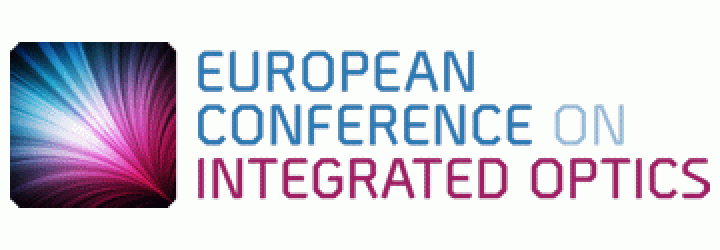High sensitivity photonic configurations for biochemical detection
Jaime García-Rupérez
Nanophotonics Technology Center, Universitat Politècnica de València, Camino de Vera s/n – 46022, Valencia – Spain
Tel: +34 963879736, Fax: +34 963877827, e-mail: jaigarru@ntc.upv.es
Abstract
In this paper, we present different approaches for the creation of high sensitivity nanophotonic-based biosensing devices that are currently being developed by our group. These approaches not only focus on the improvement of the photonic sensing structures themselves, what can have a limited effect over the sensitivity, but also on other aspects as the use of functional biomolecular receptors, the use of advanced microfluidic systems, or a proper selection of the constitutive materials of the photonic sensing structures. The aim of these approaches is being able to detect very low concentrations of biological/chemical analytes having a very reduced size and/or molecular weight, something that has a tremendous importance for many application fields as medical diagnosis, environmental control or biological/chemical threats detection, among others.
Keywords: photonic sensors, high sensitivity, PBG structures, molecular beacons, porous silicon.
Towards Photonic Biosensing using a Three-Port Mach-Zehnder Interferometer in a Silicon Nitride Platform
Jonas Leuermann, Alejandro Sánchez-Postigo, Adrian Fernandez-Gavela, Íñigo Molina-Fernandez, Laura M. Lechuga, Robert Halir
Bionand Center for Nanomedicine and Biotechnology, Parque Tecnológico de Andalucía, 29590 Málaga, Spain
Universidad de Málaga, Dept. de Ingeniería de Comunicaciones, ETSI Telecomunicación, Campus de Teatinos s/n, 29071 Málaga, Spain
Universidad de Oviedo, Departamento de Física C/Federico García Lorca, 33007 Oviedo, Spain
Nanobiosensors and Bioanalytical Applications Group. Catalan Institute of Nanoscience and Nanotechnology (ICN2), CSIC, BIST and CIBER-BBN. Campus UAB. 08193Bellaterra, Barcelona, Spain.
Corresponding author: jleuermann@bionand.es
Abstract
Integrated photonics enables sensitive and label-free optical biosensors for the detection of chemical and biological substances and is therefore promising for future lab-on-chip solutions. In this article we present our current development of silicon nitride based integrated photonic biosensing devices working at telecom wavelengths. Our approach of three-port based interferometric sensing circumvents the issues of conventional Mach-Zehnder interferometers, providing a constant sensitivity, and allowing to use a fixed wavelength sensing scheme. Preliminary experimental results show that the fabricated devices work as expected from simulations.
Keywords: photonicbiosensor,silicon-nitride,three-portMach-Zehnderinterferometer,refractiveindexsensing, phase detection
Ultra-compact label-free silicon-nanoantenna-based optofluidic microflow cytometer with a high signal-to-noise ratio
Sergio Lechago, Carlos García-Meca, Amadeu Griol, Javier Martí Nanophotonics Technology Center, Universitat Politènica de València, c/ Camino de Vera s/n – 46022, Valencia – Spain Tel: +34963877000,
Fax: +34963877827, e-mail: serlecbu@ntc.upv.es
Abstract
Flow cytometry currently represents a fundamental source of progress in biomedical research and chemical diagnosis, opening new means in the treatment of diseases such as AIDS or cancer. Via this technique, flows of live cells or biotargets can be dynamically analysed via the use of optical- or impedance-based devices. In this work, an ultra-compact microflow cytometer enabled by on-chip silicon photonic antennas with an enhanced signal-to-noise ratio (SNR) is designed and experimentally demonstrated. The authors previously employed the design of these all-silicon integrated nanoantennas, allowing the realization of an optofluidic lab-on-a-chip sensor. Going a step further, here, we developed an enhanced version of this system, focusing our efforts on improving the SNR of a target in several angular positions. We find an optimal receiving angle with SNR figures higher than 14 dB, which not only overcomes our previous scheme by more than 10 dB, but also competes with the best stateof-the-art on-chip implementations, yielding the most compact footprint demonstrated so far.
Keywords: Lab-on-a-chip Devices, Integrated Optics, Nanoantenna, Sensing, Silicon Photonics.
Nanoscopy-on-a-chip: high-throughput super-resolution imaging
Øystein Ivar Helle, David Andre Coucheron, Jean-Claude Tinguely, Firehun Tsige Dullo, Cristina Ionica Øie and Balpreet Singh Ahluwalia
Department of Physics and Technology, UiT, The Arctic University of Norway, Klokkargådsbakken N-9019, Tromsø, Norway
Department of Medical Biology, UiT – The Arctic University of Norway, Tromsø, N-9019, Tromsø, Norway
Tel: +77645185, e-mail: balpreet.singh.ahluwalia@uit.no
Abstract
Fluorescence based super-resolution optical microscopy, commonly referred to as optical nanoscopy, enables visualization of nanoscale biological events and structures in living cells. Although optical nanoscopy offers unprecedented opportunities, the widespread adoption of nanoscopy is presently hindered by system-complexity, high-cost, lack of multi-modality and slow imaging speed of present nanoscopy techniques. Here, we report chip-based nanoscopy (CbN). To achieve super-resolution, our main idea consists in taking the generation, the steering and the delivery of the laser illumination pattern from the microscope and transferring it to the photonic chips. Using the principle of single molecule localization, we demonstrate CbN with a resolution of 50 nm. Furthermore, wedemonstrate the capability of CbN to acquire super-resolved images over millimetre field-of-view scale; a 100-fold increase in imaging area as compared to other nanoscopy solutions. The waveguide platform has been developed using high-refractive index material such as silicon nitride (Si3N4) and tantalum pentoxide (Ta2O5). High-index contrast materials enable tight confinement of the light inside the waveguide, allowing for ultra-compact waveguide structures with small footprint benefitting from high intensity in the evanescent field.
Keywords: Optical nanoscopy, super-resolution microscopy, bio-imaging, silicon nitride, tantalum pentoxide

